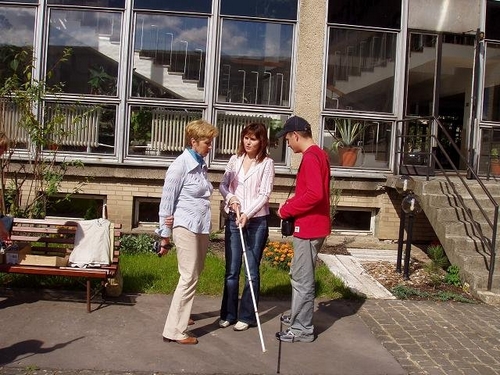The idea of the establishment for the Institute of the Blind came from the Ministry of Social Affairs. It was donated by the Ministry of Education and Enlightment on 25th January 1922. The institute was open on 1st May 1922. Nine of eleven inmates aged 8 till 15 were registered. Till the end of that year other 15 pupils came.
There were already 36 pupils at school in the school year 1923/24. Adolf Fryc was the first appointed headmaster, who till that time had worked in Deyl Institute for Blind in Prague.
Among the teachers, who strongly influenced the progress of the school, we have to mention one of them, Viliam Hrabovec, the author or the embossed maps, globe and other specific equipments for the blind.
Jozef Szász, the director of the State Institute for the deaf-mute, was in charge since 1938. The school flourished, achieved good results, although suffered difficult times, e.g. the final year of the second world’s war. The hospital for soldiers was open at the school ground, the teachers enlisted, the students were moved out, most of them went back home. After Levoča was liberated again, the school building got its original image back for a short time. The lessons started in 1945/46. The director Ján Šoltés who became a professional, went on using the important traditions in Slovak tyflopeadia. He proposed to start other two school departments for the blind pupils, other specialized classrooms, the magazines for the blind were published. The teacher Jozef Vrabel succeeded in opening the first printing office for the visually handicapped in Slovakia, which was originally situated at school, but later moved into its own location.
In 1958 the nursery school for the visually handicapped was open and more classrooms for the visually handicapped with the mental disability were added. Among other school directors belonged Juraj Mráz, Jozef Milčák and Ladislav Gajdoš.
The school modernization became in the 1980s with the strong support from Sweden and Germany. The new teaching tools came into school in 1989 from other countries. Since 1991 the Special Pedagogy Advisory Centre has been working within the school. Thanks to Hilton Perkins Foundation there were set the conditions for the education of visually handicapped children with the serious corporal defect. Since 2003 the school has been barrier-free.
